In this article, you will find out how modern technologies are changing corporate design. I will show you the new possibilities for designers in the digital age and the opportunities that arise for companies. You will discover what advantages they can gain by using modern technologies to shape their corporate image. A particular focus will be on the role of the internet and social networks in modern communication. Finally, we will look at how technology is shaping the face of corporate design today. We also look at how templates can serve as a practical tool for creating corporate design.
Table of contents
The history of corporate design
Today we have access to highly advanced technologies. But our social and economic system has not kept up with our technological capabilities that could easily create a world of abundance, free of servitude and debt.
Jacque Fresco
The history of corporate design begins in the middle of the 20th century, when companies realized that visual appearance plays a key role in their market success. The main goal of corporate design was to create a unique and memorable image that reflected the company's values and goals.
A major impetus for improving corporate design was increasing competition. Companies understood that business success required not only high-quality products or services, but also a unique image. From this point onwards, corporate design became a powerful tool to attract the attention of consumers.

An example of the successful use of corporate design is Coca-Cola. The company created an image of fun, joy and celebration. The red and white lettering became one of the most recognizable logos in the world. This logo, which was developed in 1886, has remained virtually unchanged throughout the company's existence. Interestingly, the original version of the logo was written by hand, inspired by the popular "Spencerian typeface" of the time.
Due to strong competition for customers, Pepsi-Cola tried to differentiate themselves from Coca-Cola. They used various options such as:
- An eye-catching logo in the shape of a blue circle with a pattern of red, white and blue.
- Changing the beverage packaging from glass bottles to cans.
Thanks to these decisions, Pepsi-Cola was able to win new customers and strengthen its market position.
Companies competed in almost all areas, from the taste and quality of the products to the attention of consumers through their corporate style. This competitive behavior encouraged the development of corporate design and its application in business, which influenced the success of many brands.
Coca-Cola and Pepsi-Cola: Corporate design and advertising
Coca-Cola and Pepsi-Cola used corporate design in various areas, including advertising, to promote their brands.
Advertising campaigns:
- Coca-Cola launched the famous Christmas ad featuring Santa Claus in 1931. This campaign shaped today's image of Santa Claus.
- Pepsi-Cola developed the "Pepsi Challenge" advertising series in the 1970s, where consumers try both drinks and choose their favorite flavor. This was a significant moment in marketing history, highlighting the competition between the brands.
Packaging:
- Coca-Cola hired artist Elzu Clyde Hawks in 1915 to design visually appealing packaging with an image of Santa Claus. This made the bottle unmistakable and became part of the corporate design.
- In 1991, Pepsi-Cola presented a new bottle design with a modern logo and graphic elements that reflected the dynamism and youthful character of the brand. This brought a fresh look to the packaging and helped to attract the attention of new consumers.

Coca-Cola and Pepsi-Cola's use of corporate design as a marketing tool was just the beginning of the evolution of this idea in the business. Their example shows that a unique design creates memorable images and grabs the attention of consumers. This is an effective way to strengthen the market position.
Here you can see very nicely how iconic both the logo and the bottle shape are. Two advertising agencies have used the brand strength to make the bottle visible in our mind's eye alone.
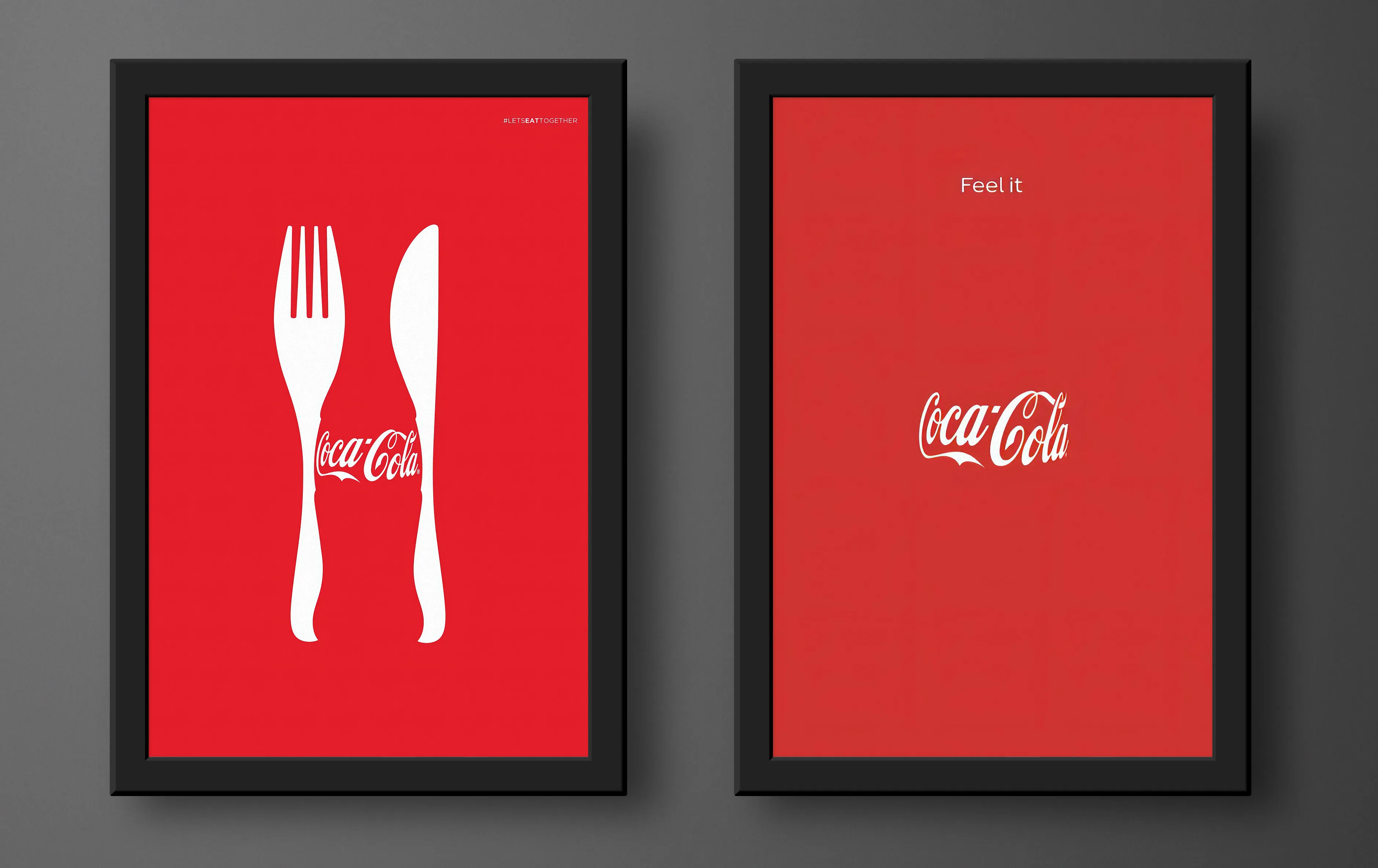
In the modern business environment, corporate design remains an indispensable part of marketing. It helps companies stand out in the marketplace and create a recognizable brand identity.
Technological progress in corporate design
Technological advancements have significantly changed and improved the corporate design field by providing companies with new ways to create and promote their brands. Here are some ways in which corporate design has evolved:
- Graphic Editors and Software: With the introduction of graphic editors such as Adobe Photoshop, Illustrator and InDesign, designers have powerful tools at their fingertips to create and edit graphic elements. These programs allow for the creation of high-quality images, logos, brochures and other branded materials.
- Animation and video: Digital technologies offer the ability to create animated films and videos that effectively convey brand messages and capture the attention of audiences. Such materials can be used for promotional purposes, training or to inform employees and customers.
- Mobile apps and interactive solutions: Mobile app development has become an integral part of corporate design. Companies develop apps to interact with customers, offer services or present products. This brings companies closer to their target group and improves customer service.
- Digital platforms for design and collaboration: Today, there are special web platforms and tools that enable designers and teams to work on projects simultaneously and in real time, regardless of their location. Such tools significantly improve communication and collaboration between project participants and make the process more productive.
Digitization has improved the quality and efficiency of creating design materials. Companies now have better opportunities to communicate with their target audience and strengthen their image in the market.
I'm glad to see that BMW is bringing an electric car to market. That's cool.
Elon Musk
The development of corporate design at BMW
BMW has successfully used digital technologies to improve its corporate style. With the new possibilities, the company was able to make its brand more attractive and memorable for customers.

BMW used technology to develop interactive applications for mobile devices. These allow customers to personalize the parameters of their vehicle, such as:
- Color choice: Users can choose from different colors to find the perfect paint job for their vehicle.
- Interior: In the application, you can choose from different materials and colors for the interior to create a comfortable and stylish environment.
- Options: Customers can select additional options and accessories for their vehicle, including safety systems, entertainment options and other features.
- Technical specifications: Users can customize the technical parameters of their vehicle, such as the engine type, transmission and control systems, to configure a car that suits their needs and preferences.
This makes the vehicle selection process more convenient for potential buyers and allows them to interact with the BMW brand in a new way.
BMW actively uses digital communication channels to promote its brand. They create promotional videos with computer graphics and stand out with original design. These videos are widely distributed via social networks, video platforms and other online channels, helping to attract the attention of a wide audience and strengthen the brand's market position.
Through the use of digital technologies, BMW has significantly improved its corporate style, making it modern, interactive and engaging for its customers.
The aim of being a good designer is to have an influence. If you design furniture or lifestyle, you should influence the way people evolve globally. It's good to have an influence.
Olivier Theyskens
Technologies for the creation of corporate design
I'll show you how new tools and technologies can help designers save time and resources. There are now a variety of programs and applications that make the design process fast and convenient.
Let's take a look at what specific options and tools have become crucial in this process and how they contribute to designers' creativity and professional growth.
Creating 2D graphics for corporate design
With the introduction of graphic editors such as Adobe Photoshop, Illustrator and InDesign, the possibilities for creating corporate design have greatly improved. Here are some examples of how these programs are used in corporate design:
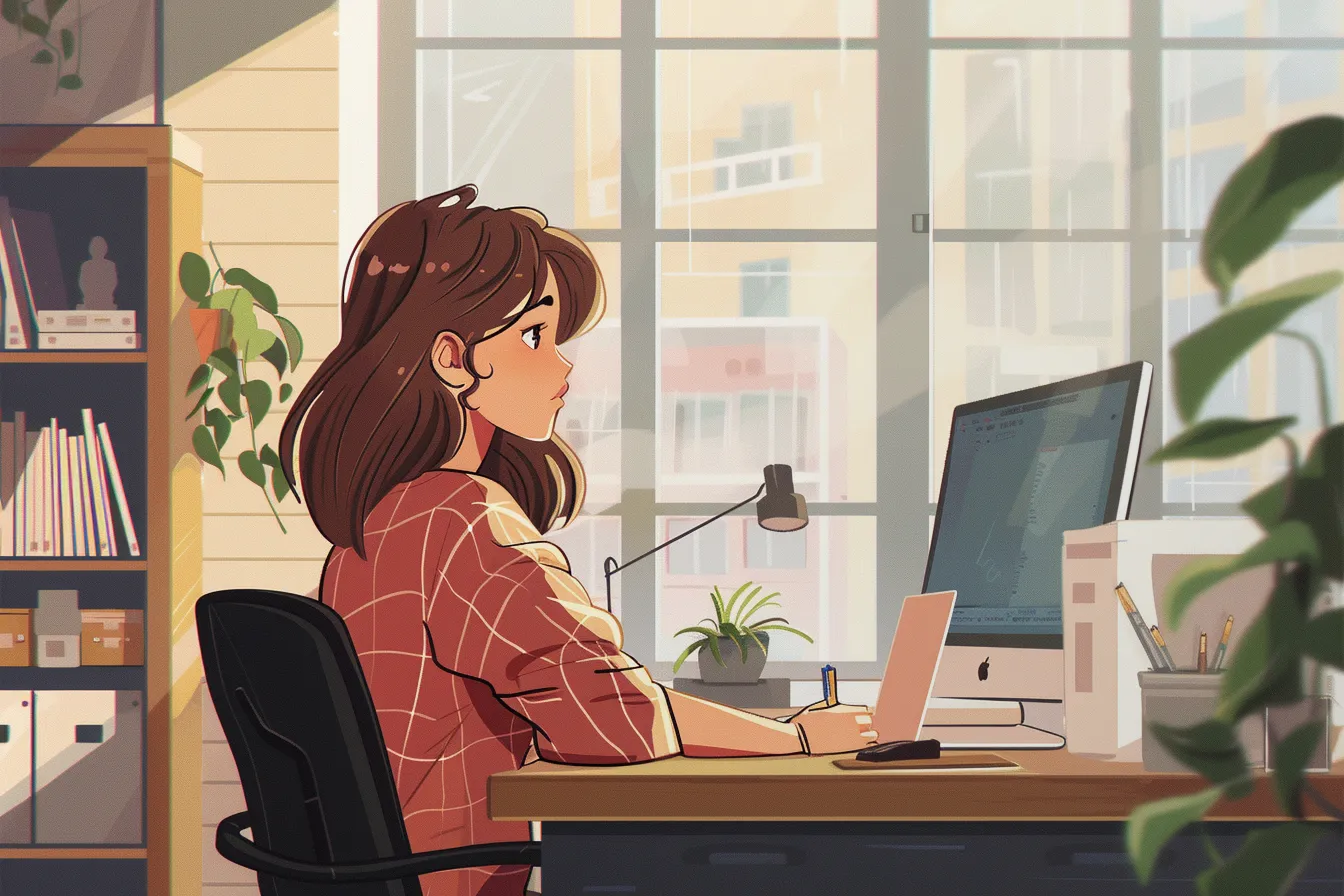
Creation of logos and brand elements: Graphic editors allow you to create unique and memorable logos and emblems. With Adobe Illustrator, for example, you can create a high-resolution vector logo that looks professional both on screen and in print.
Developing promotional materials: Adobe Photoshop and InDesign can be used to create advertising banners, brochures, catalogs and other materials that draw attention to the brand.
Product packaging design: Graphic editors are used to create the design of product packaging.
Creating website and app layouts: Graphic editors are used to create layouts for websites and mobile apps. A designer may use Adobe Photoshop to develop user interfaces (UI) and Adobe XD or Figma to create prototypes and interactive layouts.
The development of graphics programs has given designers practical tools to create a variety of materials for corporate design. This improves the visual appearance of the brand and attracts the attention of the target group.
Creating 3D graphics for corporate design
As technology has advanced, programs for three-dimensional graphics such as Blender, 3ds Max and Maya have come into use. These tools enable designers to create 3D models of objects, architectural constructions and characters for various purposes. In corporate design, 3D graphics are used to create realistic visualizations of products and concepts. Here are some specific applications:
- 3D models of products: Designers create three-dimensional models of company products for presentations, advertising or the company website. This helps customers to better understand the product and its features.
- 3D visualizations of interiors and exteriors: For architectural or interior design companies, 3D graphics is an essential tool for creating realistic visualizations of projects. This allows clients to see the look of stores or offices before construction or renovation begins.
- 3D animations and presentations: 3D graphics can be used to create animated presentations and videos that draw attention to the company's product or brand. Animations help to highlight important details of a product or process and make presentations more interesting and understandable for viewers.
- 3D modeling of packaging and branded materials: For companies that manufacture products, 3D graphics can be used to create virtual prototypes of packaging, branded materials and merchandise. This helps to visualize how the product will look on store shelves or on promotional materials.
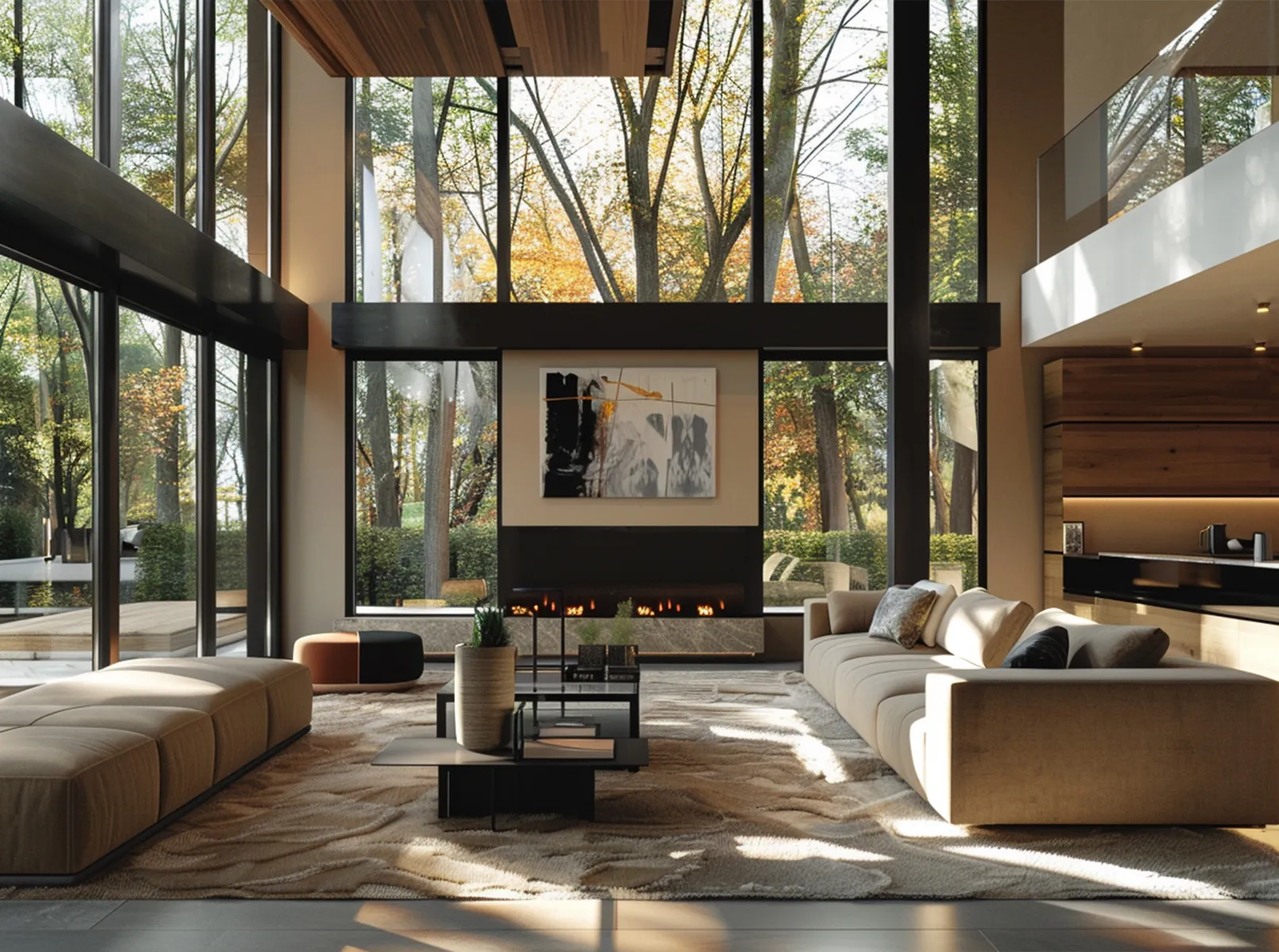
3D graphics offer designers extensive opportunities to create high-quality and appealing materials for corporate design.
Using online platforms for corporate design
Online design and collaboration platforms, such as Figma and Adobe XD, provide designers with convenient and efficient tools to work together on projects. Here are some examples of their use in corporate design:
- Creating website and app layouts: online platforms make it easier for designers to create interactive layouts for websites and apps. This simplifies the process of visualizing pages and arranging elements. Clients and project teams can better understand what the final product will look like and make changes in early stages of development.
- Prototyping the user experience: Online platforms make it possible to create prototypes of the user experience by modeling interactive elements and animations. This allows designers and clients to better understand how users will interact with the product and optimize the user interface for maximum comfort and comprehensibility.
- Design systems and style guides: Online platforms can be used to efficiently create and document designs and style guides. Designers create libraries of design elements, styles and colors, which ensures a consistent design across different platforms and communication channels.
- Collaboration and feedback: These platforms provide convenient tools for collaborating on projects and sharing feedback. Design teams can work on different aspects of a project simultaneously, adding comments and implementing changes in real time. This encourages closer collaboration and leads to faster and better results.
The use of online platforms for design and collaboration is an indispensable tool in modern corporate design. They help designers and teams to work more efficiently and productively.
Communication in the digital age through corporate design
In the past, corporate design communication was mainly carried out via brochures, magazines and other mass media that conveyed information one-sidedly, without the possibility of direct feedback. Nowadays, thanks to the Internet and social networks, companies can quickly reach their customers and communicate with them in real time.
The evolution of marketing through technology has led to new tools and strategies for promoting brands and products. Today, companies can:
- Create interactive websites: Interactive websites with a corporate design allow companies to better communicate with their target audience. Through feedback forms, online consultations and other interactive elements, companies can capture users' attention and better understand their preferences.
- Create animated videos: Animated videos with a corporate design capture the attention of the audience and help convey key ideas or concepts of a product. For example, a company can create a short animated film to explain the benefits of a product or service, which improves audience understanding.
- Offer virtual tours: Virtual tours in corporate design offer people the opportunity to immerse themselves in the atmosphere of a brand or product. This creates an immersive experience and strengthens the connection to the company.
- Develop mobile applications: Mobile apps in corporate design are becoming increasingly popular to promote interaction between companies and their target group. They make products and services available anytime and anywhere, making them more convenient to use.
- Use data analysis and artificial intelligence: Companies are using data analytics and AI to understand their customers' behavior. For example, they analyse purchase data or behaviour on the website in order to make personalized offers. This makes interaction with customers more effective.
The use of technology has significantly improved the quality of interaction between companies and their target group. Today, companies have a better understanding of their customers' needs and preferences, which leads to more effective and personalized communication.
The Internet as a tool for information exchange in companies
Before the digital age, corporate design interaction in companies was very limited. The creation and exchange of information, including the creation of brand manuals, required enormous amounts of time and material. Designers had to draw each element by hand and then print it on paper. The slow and laborious process often led to errors and inconsistencies, which consumed significant resources.
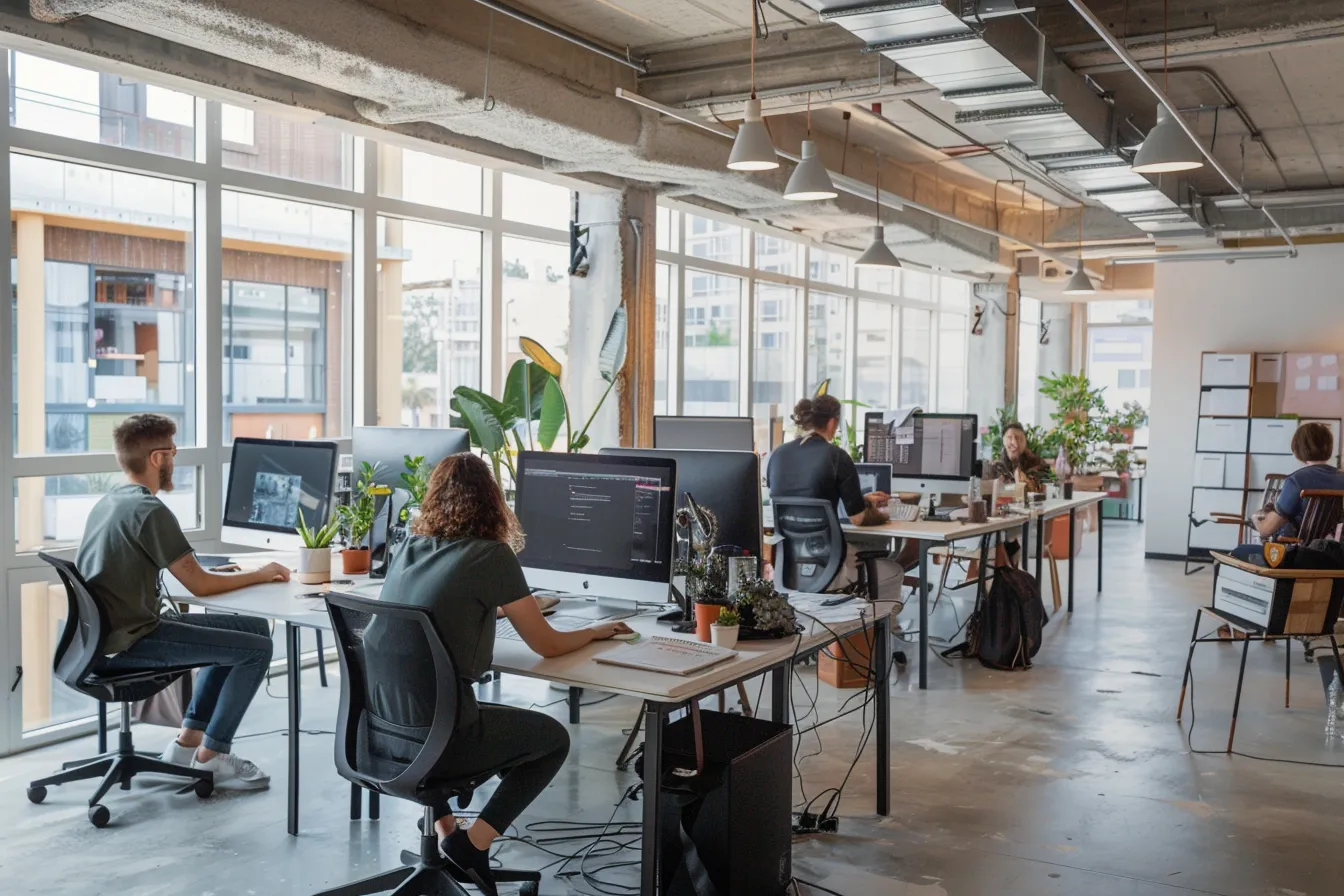
With the development of computer technologies and the internet, corporate design has changed fundamentally. Design creation is now more accessible and efficient thanks to modern technologies. Designers can easily create and edit brand manuals using special programs and online platforms. These new technologies allow designers to quickly develop and maintain a company's style, making it much easier to communicate with colleagues and clients.
The Internet has become the main tool for sharing information within companies. Instead of wasting time copying or rewriting documents, employees can easily send and receive files via email, cloud storage or dedicated company portals. This greatly simplifies the exchange of information and speeds up decision-making within the company.
Advantages of using the internet:
- Speed and efficiency: using the internet allows information to be transferred instantly between employees in a company, speeding up the processes of creating and sharing design materials.
- Accessibility: Thanks to the Internet, designers have access to a wealth of resources, templates and tools that improve the quality of their work.
- Flexibility and adaptability: Modern online platforms and programs offer flexible functions that allow design materials to be adapted and edited in real time to meet the needs of the company.
- Collaboration: Internet tools support collaboration and the exchange of ideas between employees, promote collective creativity and increase the efficiency of teamwork.
The use of the Internet in corporate design brings significant benefits by saving time and resources, increasing efficiency and improving the quality of work.
Every social media post should have a beautiful graphic. If there are two identical stories, the one with the beautiful graphic will always win.
Guy Kawasaki
The role of social networks in opinion formation and their connection with corporate identity
For many companies, corporate identity is not just a design, but a driving force in marketing. Unique design, logos and color schemes help to make the brand recognizable and attract the attention of potential customers.
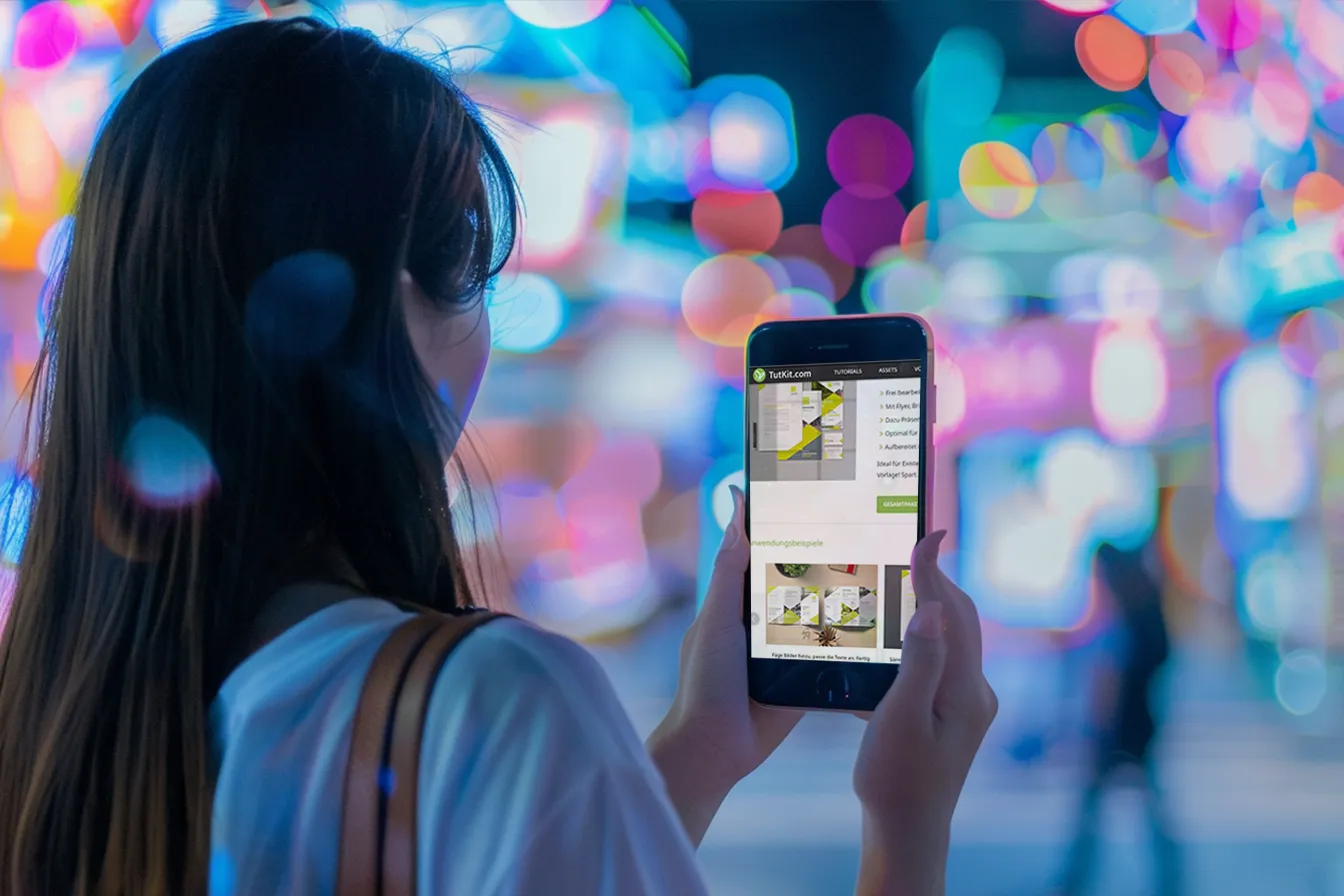
Before the advent of social networks, companies used traditional advertising methods such as television, radio, printed brochures and promotional items. However, these methods had their limitations and were less effective in capturing the attention of the target audience.
With the advent of social networks, forming opinions about companies and their products became much more accessible. Here are some ways companies are using social networks to promote their brand:
- Branded posts: Companies create content on social networks using their corporate design, including logos, colors and fonts. This makes their posts easily recognizable to their audience. For example, Starbucks often uses its signature green color and logo on social media.
- Interactive content: Videos, animations and interactive posts with corporate design elements attract more attention and encourage interaction. Coca-Cola, for example, creates interesting videos with its corporate design to attract the attention of a broad target group.
- Targeted advertising: Companies analyze user behavior on social networks to create advertising that targets interested groups. Using the corporate design in advertising makes the brand more recognizable and credible.
- Audience engagement: Running competitions, surveys and promotions using the corporate design helps to strengthen the connection with the audience and create a positive image of the company. Nike, for example, regularly launches competitions with hashtags linked to their company motto "Just Do It".
- Interactive filters and stickers: Creating your own filters and stickers in social network apps extends the brand on platforms such as Instagram and Snapchat and attracts users to interactive activities with the corporate design.
By using social networks and corporate design, companies gain a powerful tool to promote their products and services. This enables cost-efficient creation and distribution of the corporate design.
From Nike, we buy victory. From Under Armour, we buy protection. From Lululemon, we buy zen. From Patagonia, we buy conservation. From BMW, we buy performance.
Andy Dunn
Individual approach to the creation of corporate design
In today's business world, the individuality of corporate design remains an essential element of a successful strategy. Customers value uniqueness and the feeling of attention that an individual approach conveys. Studies show that over 80% of customers are more likely to buy from companies that offer a personalized service experience.
Corporate identity plays a key role in forming the impression of a company. It helps to stand out in the market and creates a consistent and recognizable visual impression. For example, logos of companies such as Nike or Coca-Cola have become integral parts of their corporate design and are recognizable worldwide.
As technology advances, more and more opportunities are opening up for corporate design. Online platforms offer a wide range of ready-made templates for logos, style guides and other elements of corporate design. This makes the process of creating and updating their brand easier for small and medium-sized companies, without significant investment in design and marketing.
Interesting fact: Some well-known brands such as Coca-Cola and Nike use ready-made templates to create their promotional materials. This helps them save time and resources while maintaining their unique corporate style.
Remember that a good design should be unique and reflect the company's ideas. Templates can help, but they need to be customized to fit your goals and style.
Professional templates for corporate design on the TutKit.com portal
For more than a decade we, the portal TutKit.com and the agency 4eck Media, have specialized in the creation of corporate design. Our extensive portfolio offers a huge selection of customizable templates for any business.
Our templates
Our corporate design templates are suitable for a variety of business applications and are easily customizable. We offer templates for:
- Business Cards
- Flyers and folders
- Letterheads and invoices
- roll-ups
- PowerPoint presentations
- Newspaper advertisements
- Facebook cover images
These templates feature modern designs and cover a variety of formats, including InDesign, CorelDRAW, Word and Photoshop
Who are our templates suitable for?
Our templates are ideal for:
- Small and medium-sized enterprises (SMEs)
- Craft businesses
- Service providers in the web and IT sector
- Start-ups and teams
- Freelancers and the self-employed
Formats and customizability
Our templates are available in common formats and can be easily edited in programs such as Adobe InDesign, CorelDRAW, Microsoft Word and Adobe Photoshop. This makes it quick and easy to adapt them to your specific needs.
Advantages of our templates
- Time-saving: You skip the tedious design process and save on expensive agency fees.
- High quality: Our templates offer agency quality and are professionally designed.
- Consistent design: All templates have the same design style for a consistent look and feel.
Download now
Dive into the corporate design category and discover the template you like best. With our templates, you can design your business communication professionally and consistently. Download the right template today.

